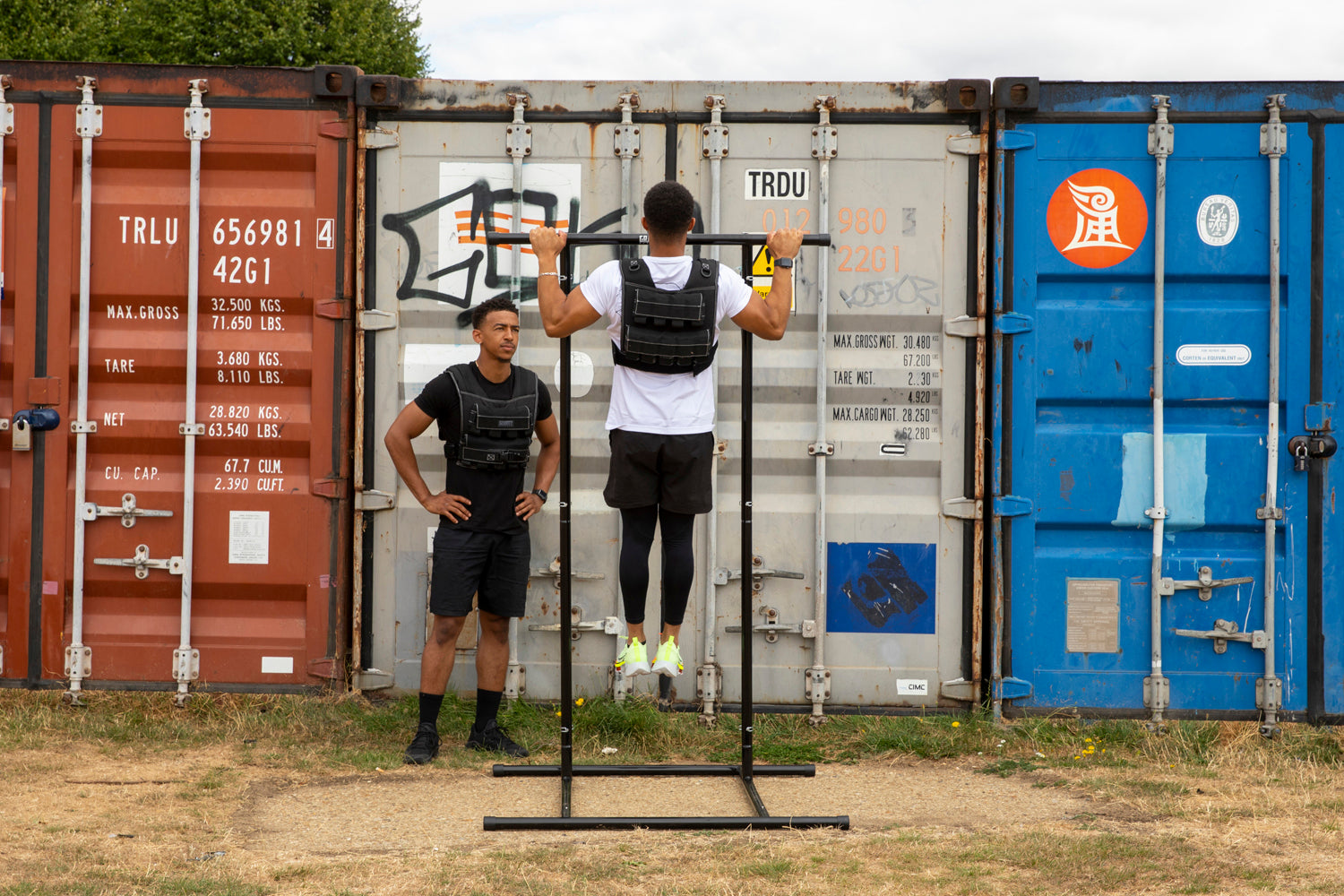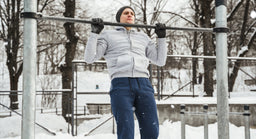
Take Calisthenics To The Next Level With Weighted Challenges
To level up your Calisthenics training, the next stage is to add weight, whether using a weight belt or a weight vest. Weighted Calisthenics will help you build the strength through all ranges of motion to increase your TUT (time under tension) for skills, add reps to those bodyweight movements and keep away from plateaus with Progressive Overload.
The best way to start weighted Calisthenics, as a beginner, is to start with negative reps. Your body can potentially carry up to five times more weight through the negative part of a movement (the Eccentric). Start by building up your negatives before getting to full strength reps with that weight, so your body and nervous system can learn what that engagement feels like.
For those who are more advanced (or at intermediate level or above), performing a full movement such as a pull up for at least 12 consecutive reps is the marker for when to add weight. Add weight incrementally at a low weight to start with and add one rep, then add two reps for your next session around that movement. Then when you get to between 6-8 extra reps, up the weight incrementally again.
This level of scaling keeps you accountable for your own training and progress. It’s always a fun challenge to be pushing, and going up against, yourself. You can create challenges based around these increased reps, pushing yourself further. If you train with friends, creating a leader board of exercises and weight ranges always adds a little spice and friendly competition to proceedings.
I would only look to this methodology alongside learning skills and being coached in movements, as a beginner, as then you can practice your reps or skills in a coaching environment where you can learn about your own body engagement. With more advanced athletes, weighted challenges can boost your training by making it more competitive and more advanced, but also to work on longer engagement periods for skills and trying to beat your own PB’s for weight and reps. And, at the same time, allow for more challenging workouts that are, in all likelihood, more time efficient.
You can also use weighted challenges to work on your hold positions – at the top, and/or bottom of the dip for example, to add an element of isometric training. Isometrics are holding of positions and skills for extended periods to teach your body how intense muscle engagement needs to work, and what it feels like. This will be especially important for those more advanced skills, such as Levers, Planche and Handstands.
Make sure, when using weight in Calisthenics that you go through an extensive warm up and take long rest periods if you need to. Putting strain on your body in varying different ways with weight in different places, when unprepared, can lead to injury. Make sure you can safely add and remove that weight as well, if needed.
Here at Gravity Fitness, we have plenty of options to help you advance your weighted Calisthenics game, from dip belts to ankle weights or weighted vests to resistance belts! Check out our Calisthenics store below to level up your weighted Cali training!
Tag us @gravity.fitness on IG so we can see your progress through weighted Calisthenics. Also do you have any challenges you like to use? Or games and challenges you have set up? Show us what you got!!!

































